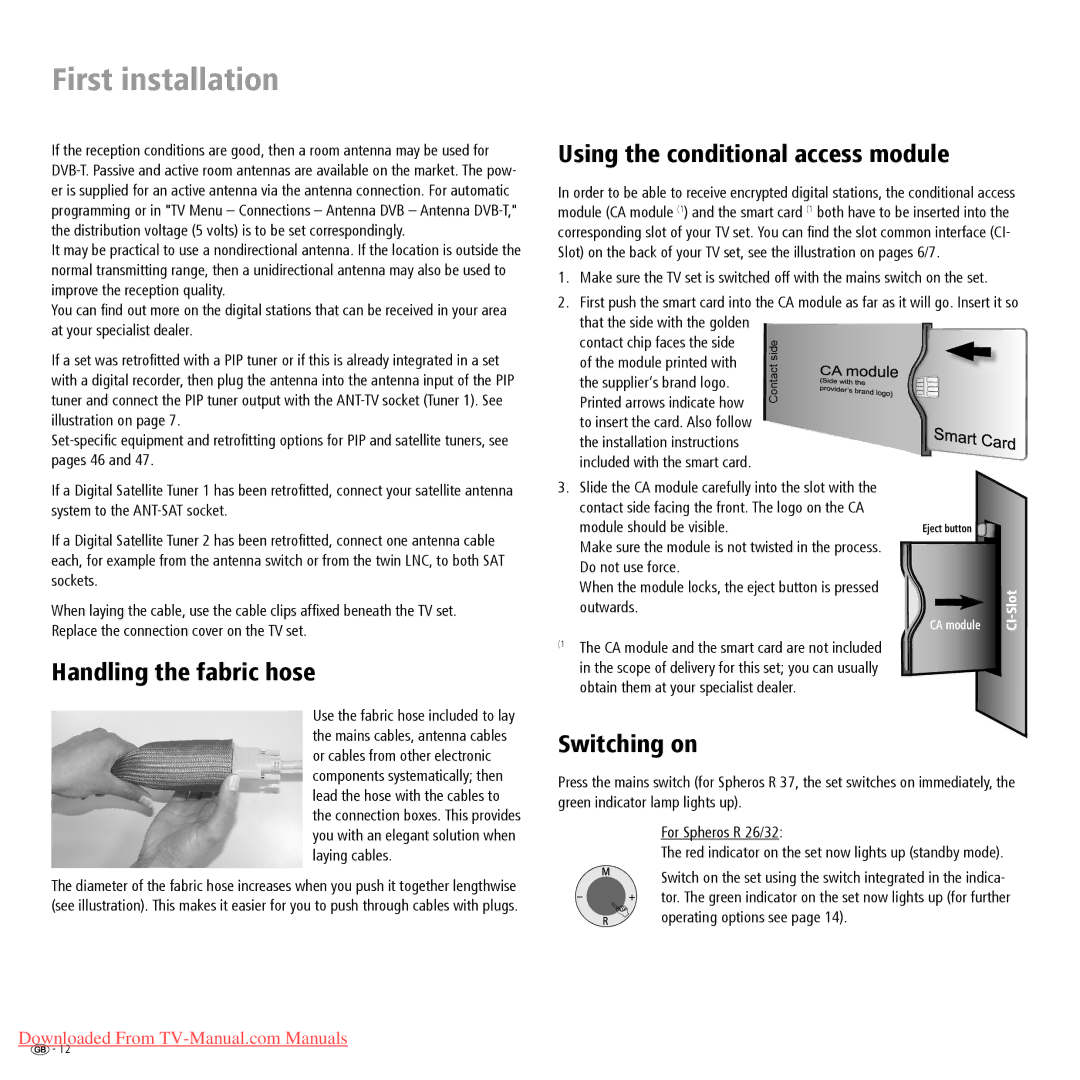Spheros R 32, Spheros R 37, Spheros R 26 specifications
Loewe Spheros R 26, Spheros R 32, and Spheros R 37 are innovative audio solutions designed to meet the needs of both residential and commercial environments. These devices exemplify a perfect blend of cutting-edge technology, sleek aesthetics, and superior functionality, making them highly sought after for enhancing audio experiences.The Loewe Spheros R 26 is a compact speaker that delivers impressive sound quality despite its small form. One of its standout features is its high-efficiency driver, which allows for crystal-clear audio reproduction across a wide frequency range. The speaker is equipped with Bluetooth capabilities, facilitating seamless wireless connectivity with a variety of devices, such as smartphones, tablets, and computers. Additionally, the Spheros R 26 features an integrated amplifier, eliminating the need for external components, making it a versatile choice for any setup.
Moving up in size, the Spheros R 32 offers added power and depth. This model includes advanced audio technologies, such as a sophisticated DSP (Digital Signal Processing), which optimizes sound performance according to the environment. With a focus on delivering dynamic bass and clear highs, the Spheros R 32 enhances the listening experience for music enthusiasts and casual listeners alike. Its elegant design makes it a stylish addition to any room, while its robust connectivity options, including Wi-Fi and Ethernet, provide flexibility and convenience for streaming purposes.
The Spheros R 37 stands at the pinnacle of the series, designed for audiophiles who demand the utmost in sound fidelity. Featuring an expansive soundstage, the Spheros R 37 integrates multiple drivers and a passive radiator system, allowing for deep bass and a rich midrange, which is essential for reproducing complex musical compositions. The inclusion of advanced features such as multi-room audio capabilities allows users to synchronize music playback across different areas of their home or venue. Furthermore, the Spheros R 37 supports high-resolution audio formats, ensuring that every detail is captured and presented accurately.
In summary, the Loewe Spheros R 26, R 32, and R 37 represent a comprehensive range of audio solutions that cater to different needs and preferences. With features like Bluetooth connectivity, advanced DSP technology, and multi-room capabilities, these speakers are designed to deliver exceptional sound quality and convenience. Whether for personal enjoyment or professional use, the Spheros series combines innovation with aesthetic appeal, making them a valuable addition to any audio setup.

